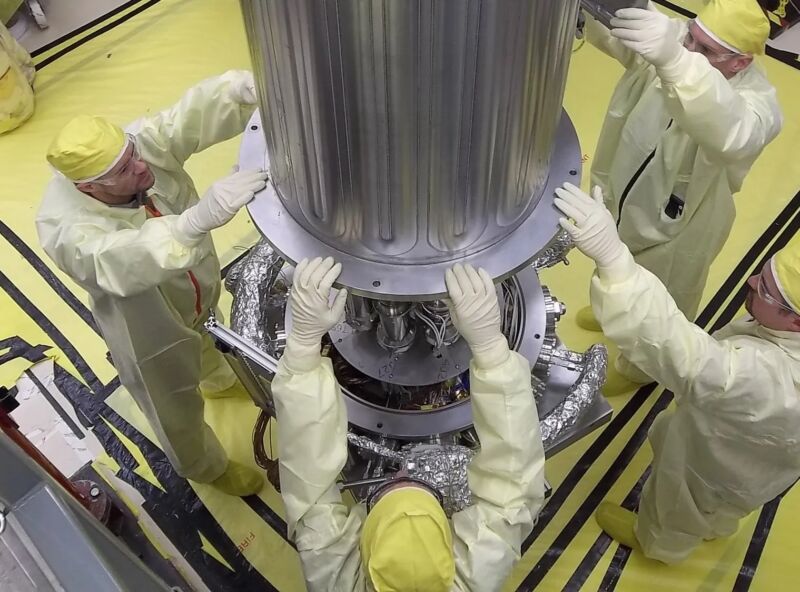
Enlarge / Engineers from NASA and the National Nuclear Safety Administration lower the wall of a vacuum chamber around the KRUSTY experiment, the Kilowatt Reactor Using Stirling Technology. (credit: Los Alamos National Laboratory)
In February, NASA celebrated the arrival of the first US-made lander on the Moon in more than 50 years, an achievement that helps pave the way for the return of American astronauts to the lunar surface later this decade. But the clock was ticking for Intuitive Machines' Odysseus spacecraft after touching down on February 22 near the Moon's south pole.
Each day and night on the Moon lasts two weeks. When the Sun sets, a solar-powered lunar lander like Odysseus is starved of energy. Temperatures during the lunar night plummet, bottoming out at around minus 280° Fahrenheit (minus 173° Celsius).
Over the course of two weeks, these cold temperatures can damage sensitive spacecraft equipment, killing a lander even if it could start generating power again at lunar sunrise. Surviving the night requires heat and electricity, and NASA officials say nuclear power is one of the most attractive solutions to this problem.
Read 48 remaining paragraphs | Comments
Ars Technica - All contentContinue reading/original-link]




